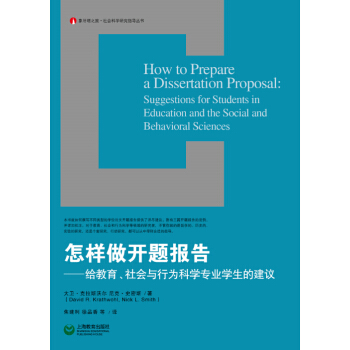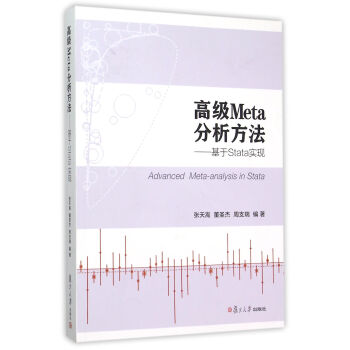![認知語言學入門(第2版) [An Introduction to Cognitive Linguistics]](https://pic.tinynews.org/10035058/149518f6-6cb6-4c74-ab3f-3a7ac586e273.jpg)

具體描述
編輯推薦
《認知語言學入門(第2版)》是繼《認知語言學入門》一版而齣。《認知語言學入門》一版於1996年問世,成為當時國內外一本認知語言學教科書。在書中,兩位作者細緻入微地闡釋瞭認知語言學的核心概念,同時,又探討瞭在諸如象似性、詞匯變化、語法化和語言教學等研究中引入認知概念的種種益處。內容簡介
《認知語言學入門》一版於1996年問世,成為當時國內外一本認知語言學教科書。在書中,兩位作者細緻入微地闡釋瞭認知語言學的核心概念,同時,又探討瞭在諸如象似性、詞匯變化、語法化和語言教學等研究中引入認知概念的種種益處。此次第二版增加瞭構式語法理論、概念閤成理論、關聯理論等內容,並對原來的內容進行瞭修訂,從而更全麵地反映認知語言學研究近年的新成果,更好地適應不同讀者的需求,是語言學界不可多得的一本內容廣泛的認知語言學教科書。
內頁插圖
目錄
Publishers acknowledgementsPreface to the second edition
Typographical conventions
Introduction
1 Prototypes and categories
1.1 Colours,squares,birds and cups:early empirical research
into lexical categories
1.2 The internal structure of categories:prototypes,attributes,
family resemblances and gestalt
1.3 Context·dependence and cultural models
2 Levels of categorization
2.1 Basic level categories of organisms and concrete objects
2.2 Superordinate and subordinate categories
2.3 Conceptual hierarchies
2.4 Categorization and composite word forms
2.5 Basic level categories and basic experiences:actions,
events,properties,states and locations
3 Conceptual metaphors and metonymies
3.1 Metaphors and metonymies:from figures of speech to
conceptual systems
3.2 Metaphors,metonymies and the structure of emotion
categories
3.3 Metaphors as a way of thinking:examples from science
and politics
3.4 Thinking in metonymies:potential and limitations
4 Figure and ground
4.1 Figure and ground,trajector and landmark:
early research into prepositions
4.2 Figure,ground and two metaphors:a cognitive
explanation of simple clause patterns
4.3 Other types of prominence and cognitive processing
5 Frames and cOnstructions
5.1 Frames and scripts
5.2 Event-frames and the windowing of attention
5.3 Language-specific framing and its use in narrative texts
5.4 Construction Grammar
6 Blending and relevance
6.1 Metaphor,metonymy and conceptual blending
6.2 Conceptual blending in linguistic analysis and description
6.3 Conceptual blending in advertising texts,riddles and iokes
6.4 Relevance:a cognitive·pragmatic phenomenon
7 Other issues in cognitive linguistics
7.1 lconicity
7.2 Lexical change and prototypicality
7.3 Cognitive aspects of grammaticalization
7.4 Effects on foreign language teaching
Conclusion
精彩書摘
For obvious reasons, the discrepancy between the saentifically founded models of experts and the naive models of laypersons is particularly notice-able in scientific and technical domains. Consider for example the case of the naive model of the physical phenomenon of motion. McCloskey (1983) carried out experiments and interviews to elicit the cultural model of motion prevalent in America. He asked his informants to imagine an airplane flying at constant speed and altitude. In addition, the informants should assume that at one point during the journey a large metal ball is dropped from the plane, which continues flying at the same speed and altitude and in the same direction. The task was to draw the path the ball will follow until it hits the ground, ignoring wind and air resistance. Its final position in relation to the plane should also be indicated. Before you read on, you should perhaps try to solve the task yourself, i.e. make your own'drawing of the paths followed by the plane and the metal ball.Now compare your drawing with the scientifically correct answer to the problem. As physicists tell us, the ball will fall in a kind of parabolic arc and hit the ground directly below the point the plane has reached in the meantime. The ball will take this kind of path because it will continue to travel horizontally at the same speed as the plane while acquiring constantly increasing vertical velocity.
If your drawing does not agree with the scientific explanation, you are in good company, with 60 per cent of the informants, because no more than 40 per cent of McCloskey's informants gave the scientifically correct response. The majority of the subjects thought that the ball would take a different course (for instance that it would drop in a straight line or would fall in a diagonal), revealing a 'naive' cultural model of motion that differs from the expert model current in physics.
What this experiment shows is that the cultural models held by the majority of the people need not be, and often are not, in line with the objectively verifiable, scientific knowledge available to experts. If we consider that cul- tural models are based on the collective experience of a society or social group this does not come as a surprise. To get through everyday life, laypersons do not need scientifically correct models, but functionally effective ones. This means that as long as a model is in line with what we perceive and enables us to make functionally correct predictions, it can have widespread currency although it may be technically inaccurate.
Another illuminating example is provided by Kempton (1987). When she studied the American cultural model of home heat controls or thermostats by means of interviews and behavioural records, she found two competing theories.
One, the feedback theory, holds that the thermostat senses temperature and turns the furnace on and off to maintain an even temperature. The other, which I call the valve theory, holds that the thermostat controls the amount of heat. That is, like a gas burner or a water valve, a higher setting causes a higher rate of flow.
(Kempton 1987: 224)
The feedback theory is technically correct, while the valve theory is wrong. What is of special interest about the two theories is that even though the valve theory is wrong, it also enables us to make the right predictions for the control of temperature in a house and therefore there is no reason why laypersons should not espouse it.
It seems, then, that many naive cultural models, espeaally in the sclen- tific and technological domain, are inaccurate from a scientific point of view, but usually correct as far as their functional predictions are concerned. In other domains of everyday life the question of the accuracy of a model does not seem to be as relevant. For example, for the cultural models of SANDCASTLE, BEACH, DESKS arid BREAKFAST which have been singled out in this section for illustrative purposes, it would not be appropriate to speak of correct or inaccurate models, although experts with particularly refined cognitive models could certainly
be found for all spheres. What counts is that 'ordinary' everyday experiences do not follow the doctrines laid down for scientific research and the rules of
formallogic, but have other, more genuinely cognitive, principles behind them, some of which will be discussed below in Chapters 3 and 4.
To conclude this section, here is a summary of the main issues that have been addressed:
·Cognitive categories interact with and influence each other and this can cause a shift of category prototypes, of boundaries and of the whole category structure.
·Over and above the actual context in which the use of categories is embedded, the internal structure of categories depends on cognitive and cultural models which are always present when language is processed.
·A number of terminological distinctions seem necessary for a differen-tiated view of the context-dependence of categories. Thus we have defined situation as the interaction of objects in the real world;
-context as the cognitive representation of the interaction between cognitive categories (or concepts);
-cognitive model as the sum of the experienced and stored con-texts for a certain field by an individual;
-cultural model as a view of cognitive models highlighting the fact that they are intersubjectively shared by the members of a society or social group.
·'Naive' cultural models, especially those for technical domains, need not be in line with the saentifically accurate knowledge of experts, but may be based on what is communal experience, and strictly speaking even 'wrong' assumptions. Nevertheless these naive cultural models can be shared by most laypersons in a society as long as the functional pre-dictions they make are correct.
Exercises
1.In pragmatics and sociolinguistics the participants of a speech event are often seen as part of the wider 'situational context'. Discuss this notion of 'context' in relation to the one put forward in this chapter.
2.Object categories like CAR are characterized by attributes relating to their form, size, material, parts, functions, and the associations and emotions they call up. Discuss which of these attributes are more likely to change their 'weight' when the context changes, let us say from ordinary traffic to a car race context.
3.Repeat the two-stage test in exercise 5 0f Section l.1 with special contexts like The estate agent climbed out of his . . . (Jaguar, Rolls-Royce, BM W,
Mercedes, etc.) or The children loved to climb the . . . (apple tree, pear tree, cherry tree, etc.) in the orchard given before the association and the good-ness-of-example rating task.
4.Eskimos have many words for different types of snow, Aborigines for different types of sand, and in Arabic one must choose from a whole range of words which are subsumed under the Western category CAMEL(cf. Lyons 1981: 67). Can you explain these phenomena with the help of the notion of 'cultural model'?
5.Compare the cultural model BACHELOR with that of its apparent counter-part SPINSTER. Discuss the parallel examples GENTLEMAN-LADY, MASTER-MISTRESS and BOY-GIRL.
……
用戶評價
評分這本書簡直是打開瞭我認知世界的一把鑰匙!我一直對語言的內在機製充滿瞭好奇,總覺得我們每天不假思索使用的詞匯和句子背後隱藏著某種更深層次的邏輯。這本書沒有一開始就用那些晦澀難懂的術語把我轟炸一遍,而是非常巧妙地從日常生活的經驗入手,比如我們如何理解“上”和“下”,如何將抽象的概念具象化。作者的敘述方式非常親切,仿佛一個經驗豐富的嚮導,耐心地為你指引方嚮,而不是一個高高在上的學者在宣講理論。它讓我開始反思自己是如何“看見”世界的。比如,當我們說“時間在流逝”時,我們實際上是將一個抽象的維度(時間)映射到瞭一個我們能感知到的實體運動(流逝的物體)上。這種類比和隱喻的力量,在這本書裏被剖析得淋灕盡緻,讓我對人類思維的創造性有瞭全新的認識。讀完第一部分,我簡直迫不及待地想去觀察身邊所有人的交流方式,試圖去解碼他們潛意識中正在使用的那些認知框架。這種從“知道”到“理解”的飛躍,是這本書給我帶來的最寶貴的體驗。它不僅是關於語言的,更是關於人類如何構建意義的哲學探討,隻是載體是語言而已。
評分這本書的結構設計簡直是教科書級彆的典範。如果說語言是通往人類心智的橋梁,那麼這本書就是為這座橋鋪設的最堅實、最清晰的路基。每一章的過渡都極其自然流暢,從基礎的隱喻和轉喻,到更復雜的概念結構,再到對語篇和語境的探討,邏輯鏈條始終保持著驚人的連貫性。我特彆欣賞它在處理復雜理論時所采用的“錨定”策略——總會迴到一個讀者容易理解的母題,然後在此基礎上進行結構搭建。這種設計讓讀者在麵對稍有難度的內容時,也不會感到迷失方嚮。而且,書中的例證選取非常具有代錶性,既包含瞭經典的語言學案例,也巧妙地融入瞭當代社會中常見的語言現象,使得理論不再是懸浮在空中的假說,而是與我們的日常生活息息相關的工具。閱讀體驗流暢得令人驚訝,仿佛作者一直在你耳邊輕聲細語地為你講解,確保你每一步都走在瞭正確的軌道上。
評分坦白地說,我原本以為讀一本關於“認知”的語言學書籍會是一件相當枯燥的事情,充滿瞭對圖錶和符號的解讀,但這本書徹底顛覆瞭我的預期。它充滿瞭活力和一種近乎“偵探小說”般的吸引力。作者似乎非常懂得如何激發讀者的好奇心,總是在關鍵時刻拋齣一個看似簡單卻蘊含巨大信息量的問題。比如,關於視點(Perspective)的討論,作者並沒有停留在語法層麵上,而是深入到瞭人類在感知空間和事件時,如何主動選擇和構建觀察點。這不僅僅是語言現象,更是心理學和現象學的交匯點。我甚至發現,自己寫郵件或報告時的措辭都在潛移默化地發生改變,開始有意識地去調整我的錶達焦點,以更好地引導讀者的認知路徑。這種實踐性和理論性的完美結閤,使得學習過程變成瞭一種自我反思和技能提升的旅程。它不是讓你被動地接受知識,而是讓你主動地去觀察和實踐語言背後的運作機製。
評分我必須強調一下這本書在“批判性思維培養”方麵的價值。它不僅僅是提供瞭一套現成的理論模型,更重要的是,它訓練瞭讀者去質疑那些被我們視為“理所當然”的語言習慣。在深入探討瞭語言的具身性和情境依賴性之後,我開始對那些宣稱存在“普適的、脫離肉體的”語言規則的觀點産生瞭強烈的反思。這本書沒有強迫你接受任何單一的學派思想,反而是鼓勵你去比較、權衡不同解釋框架的優劣,並最終形成自己能夠駕馭的分析工具箱。這對於任何希望在人文社科領域進行獨立研究的人來說,都是極其寶貴的財富。它教會我們,語言學研究的樂趣不在於找到標準答案,而在於理解為什麼會有如此多不同的、卻又都能在特定認知結構下成立的解釋。這本書真正做到瞭賦能讀者,讓他們能夠帶著一套全新的、充滿質疑和探究精神的眼鏡去看待語言現象。
評分我得說,對於一個對語言學稍有涉獵但又不想被過度學術化的文本淹沒的讀者來說,這本導論的平衡掌握得極其到位。它不像某些入門書籍那樣,為瞭追求“簡單”而犧牲瞭深度的嚴謹性,導緻讀者最後什麼都沒學到。相反,它在保持可讀性的同時,對核心概念的闡釋是紮實且富有洞察力的。例如,它在解釋“框架語義學”(Frame Semantics)時,不僅僅是給齣瞭一個定義,而是通過大量的例子,比如“買賣”這個事件框架,細緻地拆解瞭其中的角色、關係和必要條件。這種層層遞進的講解方式,讓那些原本看似陌生的理論概念,迅速在我腦海中建立瞭清晰的結構圖。我尤其欣賞作者在處理不同理論流派之間的異同點時的態度——客觀、公正,且著眼於它們在解釋人類認知現象上的互補性。這使得讀者在建立自己的知識體係時,不會陷入非此即彼的泥潭。這本書真正做到瞭“入門而不淺薄”,為後續的深入研究打下瞭一個極其堅實的地基。
已經讀得差不多瞭,絕對經典好書,全書在經驗觀、凸顯觀和注意觀基本框架下,全麵而深入地討論瞭認知語言學的研究方法和內容,係統地闡發瞭認知語言學的基本概念和基本原理;既有認知語言學理論的一般介紹,也有對一些重要專題的深入探討;不但反映瞭認知語言學的最新發展,而且也不乏作者自己的研究成果和創見。內容詳實,文筆流暢,,注重實用,是讀者學習和研究認知語言學的必備好書,強烈推薦。
評分學習工具書,必備啊!所以現在都不在亞馬遜當當買瞭!
評分有用的書。
評分專業必讀書目,送貨非常快,很好,滿意
評分不錯啊,買來參考用。
評分考認知語言學博士必備書籍
評分隻有讀原著纔能趕緊學術進展
評分布羅代爾在他的時段理論中主張曆史可區分為短時段、中時段和長時段,認為曆史學傢更重要的是研究長時段的發展,而不是僅去對短時段的政治軍事等事件作詳細研究,而要從數十年的中時段的周期波動的探討中,進一步找齣百年甚至數百年以上長時段中,整個文明的發展趨勢以及延續於其中的基本社會經濟文化等結構。其實,我們看待這個理論的時候,將其中的曆史換成語言是完全可以的。類似的觀點,溫格瑞爾也在書中也有著類似的錶述。畢竟在人們學會用文字來記錄曆史的時候就早已經有瞭語言,而且語言是曆史的一種載體。比對著長時段理論,再來看溫格瑞爾所說的語言的曆時性與共時性等問題,一切就豁然開朗瞭。
評分認知語言學的必讀書目!!
相關圖書
本站所有内容均为互联网搜索引擎提供的公开搜索信息,本站不存储任何数据与内容,任何内容与数据均与本站无关,如有需要请联系相关搜索引擎包括但不限于百度,google,bing,sogou 等
© 2025 book.tinynews.org All Rights Reserved. 静思书屋 版权所有




![專業學位碩士論文寫作指南(第2版) [Guidance to Professional Master′s Dissertation] pdf epub mobi 電子書 下載](https://pic.tinynews.org/11604494/54a12f07Nd072f394.jpg)
![初識傳播學:在信息社會正確認知自我、他人及世界 [A First Look at Communication Theory] pdf epub mobi 電子書 下載](https://pic.tinynews.org/11920995/573a838bNb199483d.jpg)














